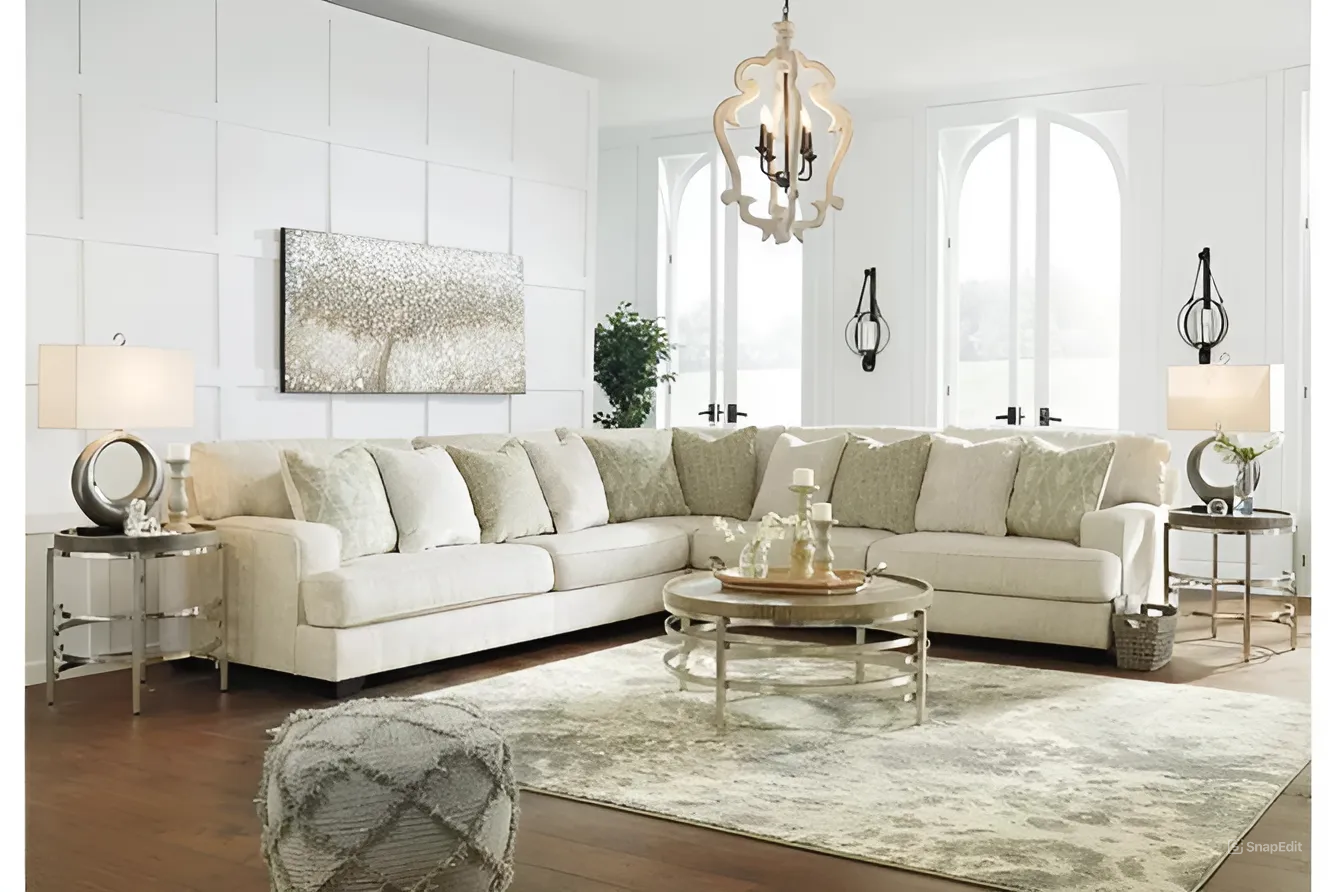
The Key Components Of A Quality Sofa
As the most used piece of furniture in our home, your sofa is a centrepiece around which everything else revolves.
A timeless piece that instantly catches the eye of any incoming guests, purchasing a sofa is a worthwhile long-term investment that demands hours of deliberation.
Given the huge number of sofa options available on the market, how do you know where to start your search? And with a seemingly endless amount of choices, how do you know if you have chosen the right one?
To begin, there are a few things to take into account on the lookout for the perfect sofa.
The perfect sofa should be comfortable, chic, and built to last, fitting the space like a glove. Ideally, it should mesh with the overarching theme of the room and enhance the aesthetics and functionality of the space.
- Size
Size is perhaps the most important factor to consider. An ill-fitting sofa is going to have a detrimental impact on your living space, either making the room appear too empty or too cramped and uncomfortable.
If you have a small living space, it is best to go with a 2-seater sofa. These sofas seat two people perfectly and three in a pinch, making them perfect for couples who occasionally entertain guests. Combine this setting with an elegant ottoman to rest your feet, and you achieve optimal comfort.
As a slightly larger alternative, the 3-seater sofa provides additional space with minimal impact on the available space. If you wish to thoroughly impress your guests, adding an accented coffee table will do the trick.
For those who require additional seating but lack living space, for instance, a family living in an apartment with multiple kids, a compact sectional such as an L-shaped sofa is the answer. L-shaped sofas often also come with hidden functionality, such as a fold out sofa or additional storage space underneath, which is perfect when you have extra guests over.
It is worthy to note that the stylistic features of a piece of furniture can impact the perceived size of a sofa. For example, a smaller couch with one or two seat cushions can appear longer and sleeker compared to the exact same couch with three seat cushions.
Hence, given that fit is the most important consideration, always measure your room to ensure there is sufficient space around your sofa in all directions. Remember, the sofa should not overwhelm the room to the point where it is a hindrance to moving around—big is not always better.
- Shape
When selecting a shape, consider the intended function of the sofa and how you want it to look in the room.
A L-shaped sofa is ideal for a casual, family-oriented living space. It occupies minimal room but offers extra space for putting your feet up or entertaining any unexpected guests. It is also perfect for partitioning large open spaces, such as in situations where the living room and dining room are combined.
Even if you have ample space, it is not advisable to purchase a pair of identical 2 or 3-seater sofas. Instead, you want to integrate modular solutions such as a 3 plus 2-seater sofa or pair your sofa with a reclining sofa armchair or ottoman as additional options.
This way, you can construct an interesting juxtaposition with the living room space, which can be very visually appealing. It also means you are taken care of regardless of whether you are relaxing alone in front of the television or hosting a gathering with a few friends in tow.
Ideally, you want to introduce flexibility into your living room design so you have more opportunities to change things up in the future.
- Style
Because your sofa design is intrinsic to the overarching appeal of your living room, there is a need to carefully identify the right sofa for the aesthetic of the space. Pick something that is practical, stylish, and in tune with the rest of the living room arrangement.
For instance, a slipcover sofa with rolled arms works magic in a classically designed home, while a contemporary home may be better styled with a minimalist, clean-line design sofa for a whimsical twist.
If you'd rather play it safe when it comes to your sofa choice, have a look at classical and contemporary-style sofas. These are often the most sought-after furniture styles.
Classical furniture generally transcends eras, so it is likely to appeal to family and guests of every age group. A classical sofa exudes calm and confidence, and will never go out of style.
Contemporary furniture mainly utilises neutral tones like white and grey along with rigid lines. This is ideal if you want a sofa that blends in seamlessly with a minimalistic setup, as part of a relaxed, neutral-coloured room.
Keep in mind that if you want your sofa to be more future proof, you should opt for a style that is less eye-catching and more timeless. This provides additional flexibility to mix-and-match a wide variety of styles and colours, should you wish to revamp your home down the line.
- Material
The crux of a functional and aesthetic sofa is in its material so to keep your sofa looking immaculate, it is important that you select the right fabric.
Leather and fabric are perhaps the two most common upholstery used for sofas as both materials boast the most substantial benefits.
Leather sofas are a better investment when it comes to withstanding long-term wear and tear. For starters, leather rarely absorbs smell and liquid so you do not have to worry about odour.
Additionally, a leather sofa lets you wipe away dirt or food spillages effortlessly, making them much easier to clean. They are certainly the more durable option if you want your sofa to last longer without having to replace the fabric every few years.
On an aesthetic front, sofas made of genuine leather are typically associated with warmth and luxury. They tend to convey an intimate vibe, which makes them a common fixture in home showrooms.
In the past, people may have been averse to getting a leather sofa due to the assumption that the classic tan or black shades would work against the overarching design of their home. However, current leather sofas come in a wider spectrum of colours and textures to match every style of home.
Bear in mind that ongoing exposure to direct sunlight can damage the material and result in leather drying out and cracking. If this is a deal-breaker, you might want to consider going with something made of faux leather instead. This closely mimics the exquisite finish of leather without running the risk of sunlight damage.
If you consider leathered surfaces to be quite dull and uninviting, then you might prefer a fabric-base sofa for visual reasons.
Fabric material generally evokes a certain softness that makes a room seem more rejuvenating. Fabric sofas can also be found in a much broader range of colours, so you will definitely find one that complements your colour scheme.
Moreover, for an added layer of comfort, you want to consider fabric types like cotton and polyester blends or microfibre. A downside is that these materials are prone to retaining marks and stains and therefore need to be cleaned regularly, particularly for lighter sofas.
In the end, each material has its own pros and cons, so your choice ultimately hinges on your living space and your lifestyle. Browse through LifeStyle Furniture to find exquisite pieces for your home.





